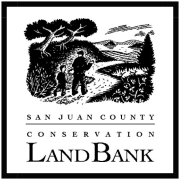I’ve chosen my crusade. I’ve decided to help save the Garry Oak habitat from disappearing even further. With less than 5% of its original habitat remaining, it could be hopeless, but I’m betting it isn’t.
Why this tree? Perhaps its beauty alone is reason enough, but it’s more than the tree – it’s the diminishment of its entire ecosystem that stirs me.
The Garry Oak is our region’s only native oak tree. Like many oaks, it is a stately tree that needs its light and space. With light and space come grasses and flowers and creatures galore. These oaks used to dot our valleys and rolling hills and, along with their accompanying grasslands, were the welcome signs for the early settlers. Those new arrivals had no clue that this prairie vista was the result of hard work by others before them. Instead, they thought that the open fields were a gift sent from heaven — for their sheep!
The many Douglas firs we see today were at one time kept at bay for a reason. For thousands of years, the Coast Salish used fire—like we use the chainsaw and mower today—to create and manage oakland prairies. The trees provided edible acorns, and in the open spaces between, grew another essential food, the camas.
Dependence on the habitat of the Garry Oak continues — for human survival (healthy habits = healthy humans) and for a myriad of other inhabitants (from butterflies to bluebirds). To save the Garry Oak is to save a rich and complex world. It is our islands’ past, and it is the shade we plant for the generations of the future.
When my sweetie Harold and I purchased acreage on Cady Mountain, little did we know about The Project that awaited us, nor how rewarding it would be. By coming to the island, I returned to my roots (my great-great-grandfather farmed what is now American Camp) and Harold reconnected to the land (he grew up farming with his family in Eastern Washington).
We both love nature, but we knew little about oak trees — that is, until we met our Oak Guru, Thom Pence. Along with Thom, our birding neighbor, Mark Lewis opened our eyes to the wonder of this habitat. Their enthusiasm was contagious. “This is great!” we said. “Now what?”
Fast forward 14 years and here are The Project’s accomplishments: Thousands of young Douglas-firs have been removed to make room for the oaks and the wildflowers. Hundreds of oak seedlings have been planted and caged (to protect them from the voracious deer). The rewards have been great – this year especially was one of the best wildflower seasons in our time on the mountain.
Encouraged, we plan to carve out ever more edges of the fir forest where we see any sign that the wildflowers want to move in. Shady evergreens and prairie plants don’t mix, and when it comes to deciding who stays and who goes, the flowers have the power.
I like to think that all this land is “our land” and that we are lucky enough to take care of it and enjoy it during our brief stay.
One of these oaks, on the Land Bank side, is quite a gnarly character. It looks as if it has been rooted there since the glacier receded (that was 10,000 years ago, so I am just being poetic here). I imagine it watches us humans with detached wisdom—its days are numbered but, unlike people, it doesn’t seem to mind. Westward from that oak is another, much younger, which was recently released (thanks to The Oak Team) from a dark fir thicket—you can practically hear it breathing a sigh of relief. Underneath the sighing oak are a handful of oak seedlings. Generations of oaks to be hugged by the next generations of people.
This is why I believe nothing is hopeless.
Shaun Hubbard
San Juan Island
Member of the Oak Team, a group of Land Bank volunteers dedicated to promoting a healthy Garry Oak habitat on Cady Mountain Preserve

